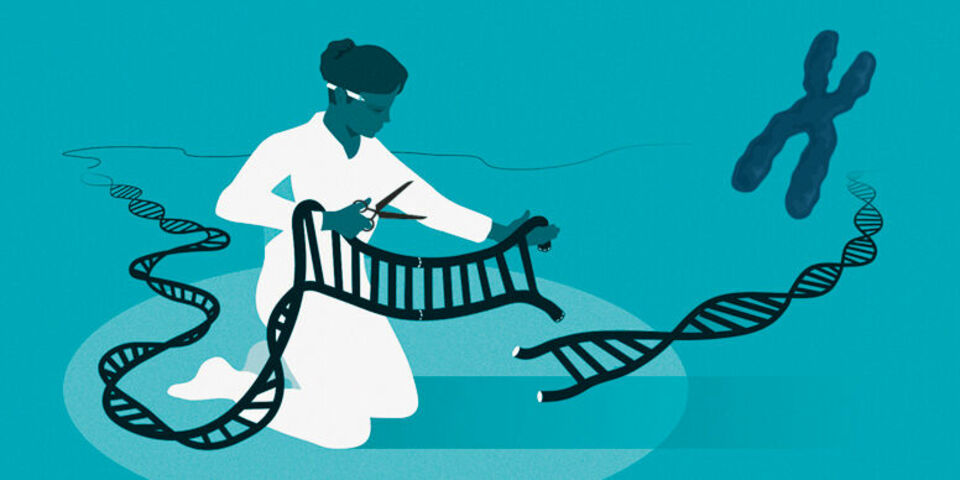Nobel Prize for ‘DNA scissors’
This year’s Nobel Prize in Chemistry has been awarded to the French researcher Emmanuelle Charpentier and her American colleague Jennifer Doudna for inventing a technique that makes it possible to cut strands of DNA with great precision .“In fact, we've been waiting for this moment for a few years now," says Tom de Greef, Associate Professor of Synthetic Biology at TU/e.
Although this chemical tool was introduced only a few years ago, it is already clear that the possibilities it provides are endless, writes the Nobel Committee. The ‘scissors’ allow scientists to modify a cell’s genetic code in order to investigate how its DNA works.
Charpentier discovered that after a viral infection, certain bacteria were able to remember the genetic code of the virus in order to better fight future infections. When she studied this process at the molecular level, she found that it involved what is now being referred to as ‘a pair of scissors’: the bacteria destroy the viruses by cutting off the piece of DNA that they remember.
A new era
Charpentier published her findings in 2011 and teamed up with Doudna that same year. Together, they developed a method that allowed them to use their newly discovered scissors to replace a piece of virus DNA with a piece of DNA of their own choosing. Now, they are able to cut strands of DNA with laser-like precision – an invention that has paved the way for all kinds of genetic research.
The scissors, which are known as CRISPR/Cas9, mark the beginning of a new era, the Committee believes. One of the hopes is that this new technique will make it possible to cure hereditary diseases. It could also help develop crops that are better able to withstand blights and drought.
Fantastic technique
Tom de Greef believes the Nobel Prize awarded to Doudna and Charpentier is well-earned, says the Associate Professor of Synthetic Biology. “In fact, we've been waiting for this moment for a few years now, even though this is a very recent discovery. But CRISPR is already so widely used; it is a fantastic technique.”
Still, he does add the following note: “The Nobel Committee is awarding the prize explicitly for the development of a method of genome editing, not for the discovery of CRISPR-CAS itself, which has a much longer history. But in my own personal opinion, Feng Zhang should have been the third recipient of the prize. After all, while Doudna and Charpentier did suggest that the technique could be used for genome editing, in other words modifying DNA, Zhang actually demonstrated it in cell lines six months later.”
He suspects that the bitter legal dispute between these two camps over the patent on the technique gave the committee grounds for making the award with an element of 'delay'. “At the time of discovery, Zhang managed to secure the patent via a faster route and the situation degenerated into a major legal sparring match. This may well explain why Zhang has now been left out in the cold.” But there may also be another reason. “George Church reached similar results at the same time as Feng Zhang. So he too should be eligible for the prize. And it simply isn't possible to award a single Nobel Prize to four persons.”
The CRISPR-CAS technique is a versatile tool, says De Greef. Replacing ‘letters’ in DNA is just one of its uses. “You can also use it to switch genes on or off, and in our lab we are studying how can you use it to store data in DNA.”
Female laureates
Before Charpentier and Doudna, there had only been five female winners of the Nobel Prize in Chemistry. “I see myself first and foremost as a scientist, but I am indeed a woman”, Charpentier remarked at the press conference. She hopes that the prize will encourage young women to pursue a career in science.
The Nobel Prize amounts to 9 million Swedish krona, the equivalent of around 860,000 euros. The winners do not have to travel to Sweden this year to pick up their prizes. The Committee is preparing a virtual award ceremony instead.


Discussion